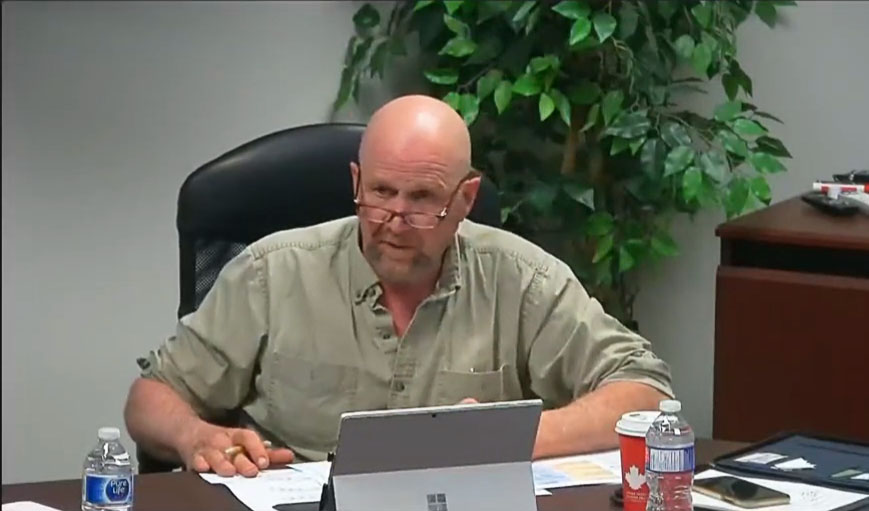
Woodlands County’s Public Participation Policy was up for discussion at a recent Governance and
Priorities Committee meeting. The policy aims to promote public participation and create open, two-
way communication.
It outlines the need for enhanced transparency in the governing process of Woodlands County so that
residents are informed of decisions made by Council and administrative actions that could affect their
property, business, or person. It also outlines the distribution of information and the receival of
feedback from ratepayers concerning things like existing or proposed programs, policy changes or the
creation of services.
Woodlands County uses several means of communication with residents, including a bi-annual
newsletter, Council highlights and media releases, their website, social media, and weekly newspaper
ads. The policy also lists fact sheets and brochures as options. The method(s) used depends on the
information being shared.
To receive information from residents, Woodlands County uses public hearings, open houses, surveys
and forums, regular Council meetings that residents are encouraged to attend, public input sessions,
emails and letters, and personal interactions with Administration and Council members.
Joan Slootweg, Manager of Community & Planning Services, explained that Woodlands County’s Public
Participation Policy came into effect on July 17, 2018, to follow amendments to the Municipal
Government Act (MGA), which changed to require Councils to establish a policy for their municipalities.
She said that smaller municipalities, like Woodlands, did their policies in a simple manner.
“There are various different policies that municipalities had entertained at the time. Some are more
robust; those were generally the larger municipalities.” Slootweg explained that larger centres typically
added more detail to their policies outlining information specific to certain events. Smaller centres
might have a policy for open houses in general. In contrast, a more significant centre might specify the
difference between a budget open house and a land-use open house, giving more detail.
She said that policy creation and bylaw creation followed a similar pathway to completion, with either a
consultant coming on to help or the Administration taking the reigns. Slootweg explained that
Administration typically has a good sense of what’s working and not working within policy because they
hear back from residents.
Policies and bylaws start as draft documents as various people take a peek and help mould them
(through workshops), including the Municipal Planning Commission and Subdivision & Development
Appeal Board. “Once they’ve had their round, we make those amendments and then bring those
forward to Council for a discussion.” After Council’s discussion, the public would share their thoughts or
concerns by attending one of two open houses, one in the Whitecourt area and one in Fort Assiniboine.
Reeve John Burrows said Council had recently seen a Public Engagement Policy from another
municipality and saw an opportunity within it for increased engagement in Woodlands County.
“This (policy) is quite structured and tends to be triggered by a process, whereas I think what Council
was trying to drive at was trying to get a little more open communication between residents. It would be
nice to be able to have that communication.”
Councillor Kuelken said that increased communication was exactly where they needed to go. “There’s a
real interest in the public because of events that have happened in the past, and there’s a pretense that
they haven’t been part of that process, and whether it’s right or wrong is irrelevant. I think going down
this path, we will have that mechanism in place where we can get that information, and Council is able
to sit with Administration in front of the residents with the process in place.”
Kuelken said the “big one” was having the Administration part of their conversation with residents. “We
know they (the residents) want to have the conversation, and I don’t think they realize that it’s far more
complex than what anyone of us as individuals on Council can explain.”
Slootweg said that in talking with their consultant about the County’s Municipal Development Plan, they
are looking to reach out to the public about amendments that could “impact the farming community”
with talks of a potential future subdivision. “We are looking at maybe doing a workshop beforehand to
get the sense of, are people open to this or are they not? I thought perhaps we could look at one in the
Anselmo area and one at the Fort Assiniboine area to get a sense from the public as to what their
thoughts are on the direction we are looking at going to protect that farmland,” she explained.
Reeve Burrows thought it was a great idea. He said people had appreciated being asked questions
through surveys in the past. Reeve Burrows said residents liked being involved in processes before
money was committed to something or planned thoroughly. He added that increased communication
was an opportunity to “up the game.”
The Governance and Priorities Committee accepted the discussion as information. Policy refreshers are
ongoing, and any proposed updates will be brought up the communication chain before reaching
Council for consideration.







More Stories
Community spirit shines at large-scale youth baseball event
Birthday party chaos sung beautifully by Pumpjack Players’ youth in spring musical
Gearing up for another season of cars, cruising and camaraderie